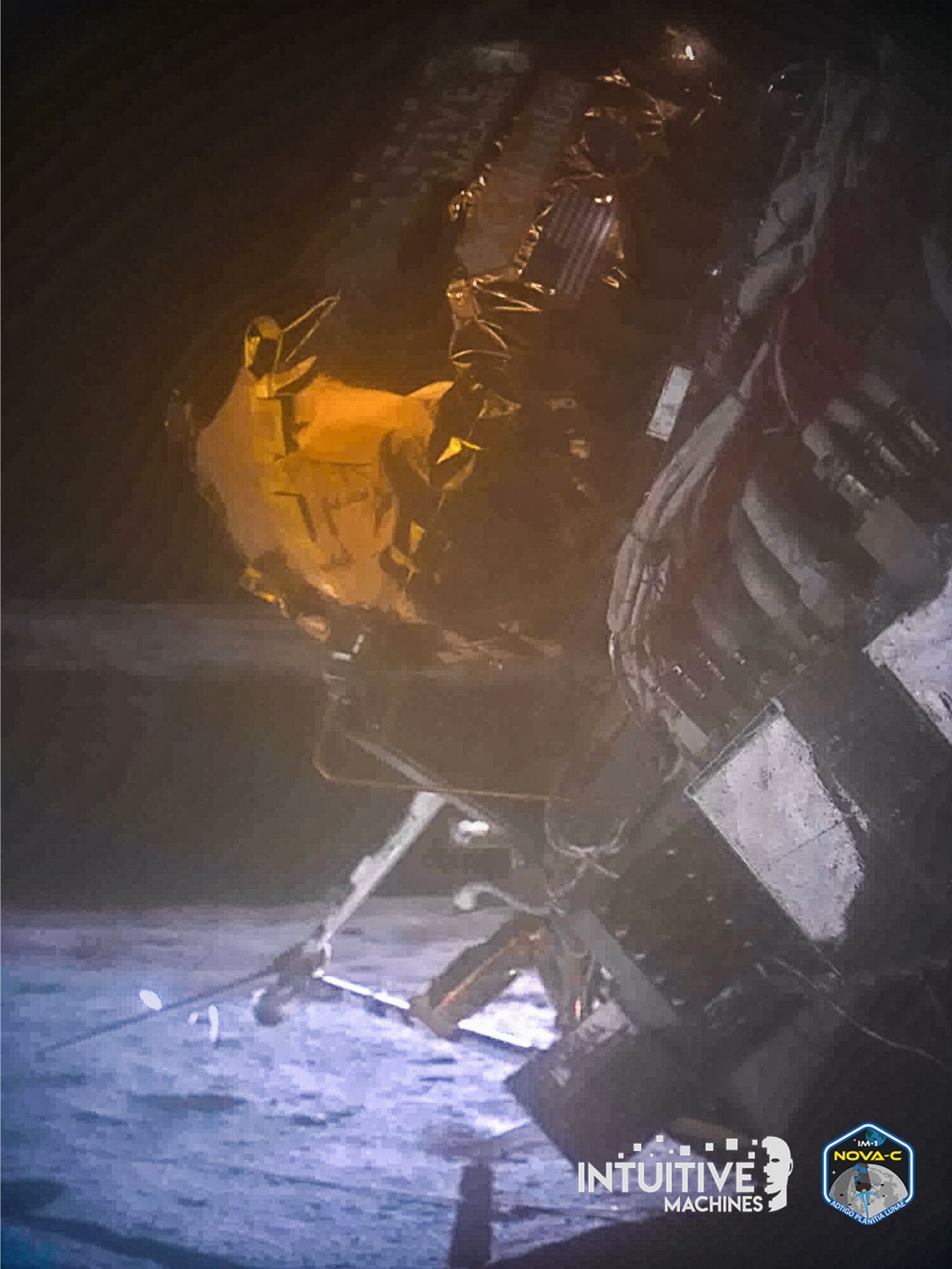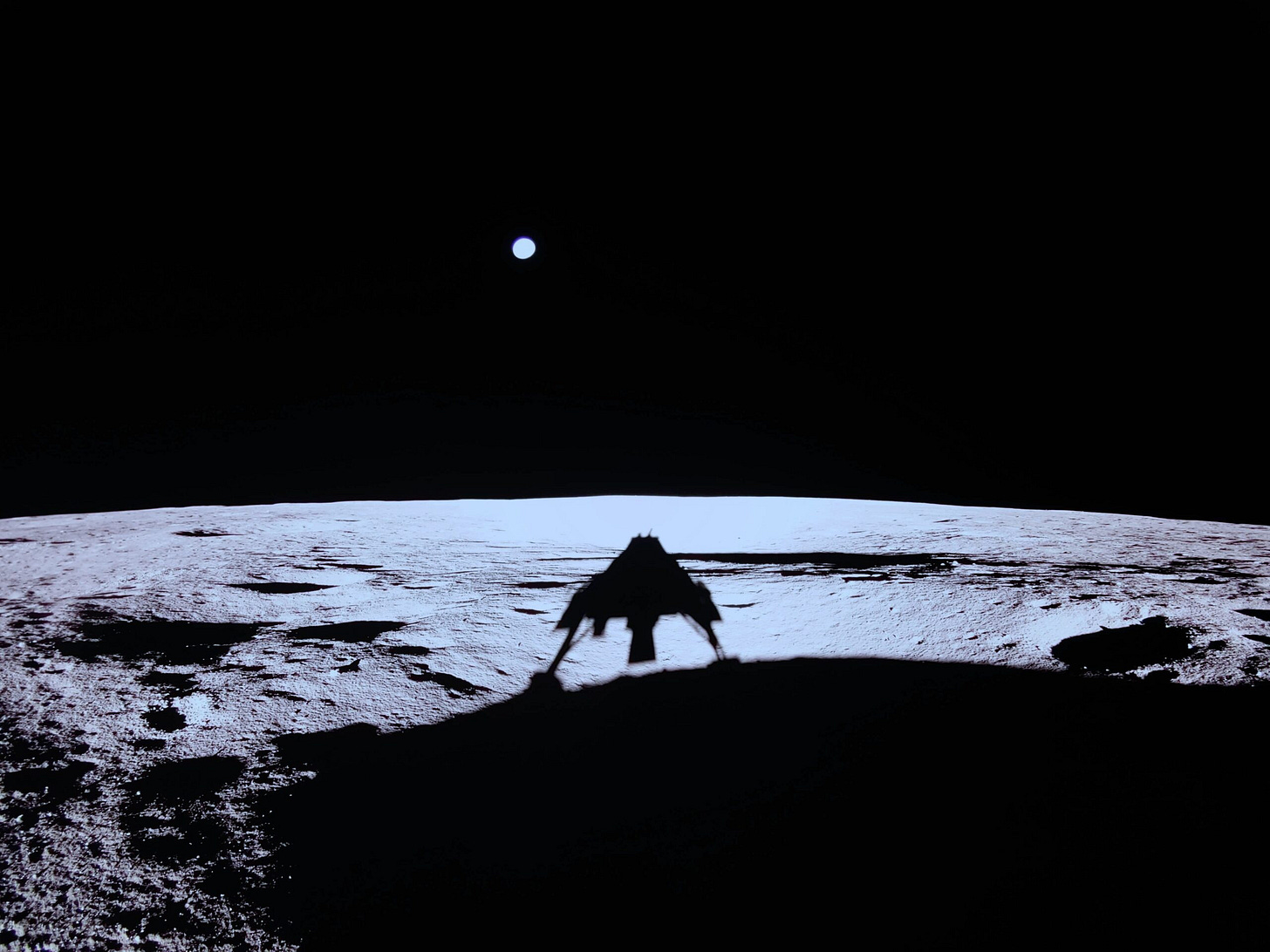Firefly’s Blue Ghost and the New Era of Lunar Exploration
Ariane 6 and Starship aborted to flight attempts, ESA mission retires, and more.
Welcome to Aerospace Insider 🚀
In this week’s issue, we’re diving into the latest and greatest from Europe’s booming space sector. Big things are happening!
Today’s summary:
🚀 Aerospace News: By the time you read this, Starship might have flown already!
💼 Top Space Jobs: Hiring doesn’t stop in the space industry. Don’t miss it.
🔍 Deep Dive: Firefly’s Blue Ghost makes history
Aerospace Weekly Roundup
Catch the latest European & global space industry highlights you can't afford to miss!
🌕 Firefly's Blue Ghost 1 lands on the moon
Firefly Aerospace's Blue Ghost 1 successfully landed on the moon on March 2, marking a significant achievement for the company and NASA's lunar exploration. The spacecraft touched down safely and is in a stable position. This mission is a major step forward in commercial lunar exploration, paving the way for future missions to the moon and Mars.
👉 Firefly Aerospace now becomes the first commercial company to land on the Moon. Not bad.
🚀 Ariane 6 second flight postponed
The second flight of Ariane 6, carrying the CSO-3 satellite, has been postponed due to “necessary ground operations”. The new launch date will be announced once these operations are complete. The rocket and satellite remain in stable conditions. The launch was originally scheduled for March 3, 2025.
👉 Last (and first) Ariane 6 flight was on July 9th, nearly 8 months ago. Will we see 5 flights this year?
🛩️ Germany invests in hypersonic spaceplane technology
Germany has awarded a contract to POLARIS Spaceplanes to design a two-stage, fully reusable hypersonic research vehicle. This vehicle will serve as a testbed for defense and scientific research and can also launch small satellites. The project aims to advance hypersonic technology, which is crucial for defense applications and space access.
🚀 Space Forest advances with PERUN rocket and hybrid engine
Space Forest successfully tested the PERUN hybrid engine, achieving a full burn cycle. This milestone will allow the rocket to reach altitudes of 150 km, and promises to advance Polish and European space technology. The engine's performance was optimised, reducing launch mass and confirming readiness for production. Future tests will focus on the validating precise flight control.
🛰️ ESA's Integral telescope ends 22-year mission
ESA's Integral gamma ray telescope has concluded its mission after 22 years in space. Launched in 2002, Integral has significantly advanced our understanding of cosmic explosions and gravitational wave events. It provided unique insights into neutron star jets and captured a giant flare from an extragalactic magnetar. The mission's success highlights the importance of observing gamma rays from space.
☄️Varda Space lands capsule in Australia
Varda Space successfully landed its reentry capsule in Australia after six weeks in orbit. The mission collected data for military hypersonic research and NASA's thermal protection systems. The capsule carried a specialised sensor payload to study the reentry environment, and achieved measurements at speeds over Mach 15. This marks a significant milestone for Varda and Australia's role in commercial space operations.
Space Jobs Spotlight 🔍
Curated roles to accelerate your career in Europe’s thriving space sector.
🚀 Internships & Graduates
Avionics MSc Thesis — Capsule Corporation
Fleet Engineering Internship — D-Orbit
💼 Space Jobs
Space Engineer — Space Composite Structures
Satellite IT Engineer — DPhi Space
Business Development Engineer — OhmSpace
Flight Engineer — D-Orbit
Electric Propulsion Engineer — ENPULSION
GNC Engineer — Lunasa Space
Mechanical Architect — Exotrail
Test Engineer — ENPULSION
Systems Engineer — Lunasa Space
System Project Manager — SpaceDreamS
🎓 PhD Opportunities
PhD on AI for Space — Interested?
Postdoc Astrodynamics & Autonomous GNC — Apply here
[still open] Three TOP PhDs at TUM — Apply here
[still open] PhD on Modelling and Control (ESA & Thales) — Apply here
[still open] PhD on astrodynamics at Imperial College — Apply here
[still open] Postdoc Opportunity at TUM — Apply here
🔥 Special Opportunitie
Cubesats hands-on training — ESA Academy
Robotics Workshop — ESA Academy
Cybersecurity Training Course — ESA Academy
This week was all about rockets… what do you think?
💡 Looking for a new job? I do more than just share listings. I can help you stand out. If you want a fresh set of eyes on your resume or LinkedIn, click here.
Firefly’s Blue Ghost Makes History
Firefly Aerospace's Blue Ghost mission has marked a significant milestone in private lunar exploration. On March 2 the Blue Ghost lander achieved a soft landing in the Moon's Mare Crisium region.
With this landing, they claim to have become the first commercial company to make a ‘fully successful’ soft landing. Here words matter, because they technically are the second private company to successfully land on the Moon after Intuitive Machines (which launched the Odysseus lander in 2024). But of course you know what happened with their lander…
However, Firefly Aerospace not only landed softly but also remained stable. And the pictures are incredible.
The Blue Ghost spacecraft was launched on Falcon 9 rocket on January 15 and carries ten scientific payloads. These instruments are designed to study the Moon's regolith properties, drill into the lunar surface, and capture high-definition images of a total lunar eclipse.
This mission exemplifies the growing role of private companies in advancing lunar exploration and aligns with NASA's Commercial Lunar Payload Services initiative, which encourages commercial partnerships for lunar missions. Let’s hope Europe replicates this initiative both in terms of funding and technological ambition.
Looking ahead, the success of missions like Blue Ghost is expected to stimulate the emerging lunar economy. By demonstrating the feasibility of private lunar landings, such missions pave the way for commercial ventures such as resource extraction, manufacturing, and tourism on the Moon. This rapidly evolving sector could ultimately lead to a sustainable human presence on the lunar surface, with private enterprises playing a key role in infrastructure development and operations.
In addition to this, Starship continues to make progress. It’s eighth test flight is scheduled to happen as this newsletter comes out. By the time you read this, Starship might have completed (let’s hope for no delays) a successful launch, booster catch (still hard to get used to this) and successful orbit insertion of Starships V2 upper stage.
Don’t forget that SpaceX won NASA’s HLS contract and is now developing the lunar version of Starship. While several milestones still need to be validated, there's no question that progress is moving forward rapidly.
Let’s see if you guessed correctly: did Starship make it to orbit? And did they manage to (again) catch the booster?
Thanks for reading Aerospace Insider.
If you found this newsletter useful, feel free to share it with someone who might enjoy it.
And if you have any feedback or suggestions, just reply—I’d love to hear your thoughts.
You can also connect with me on LinkedIn here.
See you next week.
Jaime





